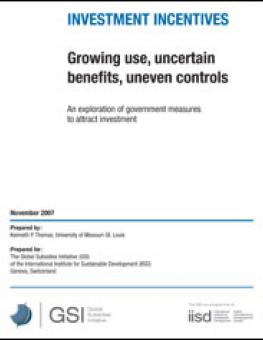
Investment Incentives: Growing use, uncertain benefits, uneven controls
Investment incentives have been around for over 100 years. In 19th century America, cities offered money to railroads in order to have the railway pass through them (Sbragia, 1996). But it was only in the late 20th century that governments around the world began offering direct grants, tax breaks, training funds, free infrastructure and other inducements to attract corporate investment. While often thought of as a competition to attract foreign direct investment, competition is equally strong for domestic firms. The most intense competition and the largest subsidies are given to well-known multinational companies who make large investments. At the local level, incentives are often given to real-estate developers and retail projects in order to capture tax revenue that would otherwise go to another jurisdiction.
You might also be interested in
July Edition | Carbon Minefields Oil and Gas Exploration Monitor
In June 2024, six governments issued 18 oil and gas exploration licences with embodied emissions of 14.7 MtCO2, led by Russia and China.
Global Dialogue on Border Carbon Adjustments: The case of Brazil
This report consolidates, analyzes, and presents the views and perspectives of stakeholders from Brazil on border carbon adjustment (BCA) schemes to contribute to the global debate on BCA good practices.
Border Carbon Adjustments: Trinidad and Tobago country report
This report consolidates, analyzes, and presents views and perspectives of stakeholders from Trinidad and Tobago on border carbon adjustment (BCA) schemes to contribute to the global debate on BCA good practices.
SUNCASA
The Scaling Urban Nature-based Solutions for Climate Adaptation in Sub-Saharan Africa (SUNCASA) project aims to enhance climate resilience, gender equality and social inclusion, and biodiversity protection in urban communities in Dire Dawa (Ethiopia), Kigali (Rwanda), and Johannesburg (South Africa). Focused on community-level capacity building and leveraging gender-responsive nature-based solutions (NbS), SUNCASA will benefit 2.2 million people living in high-flood-risk areas.